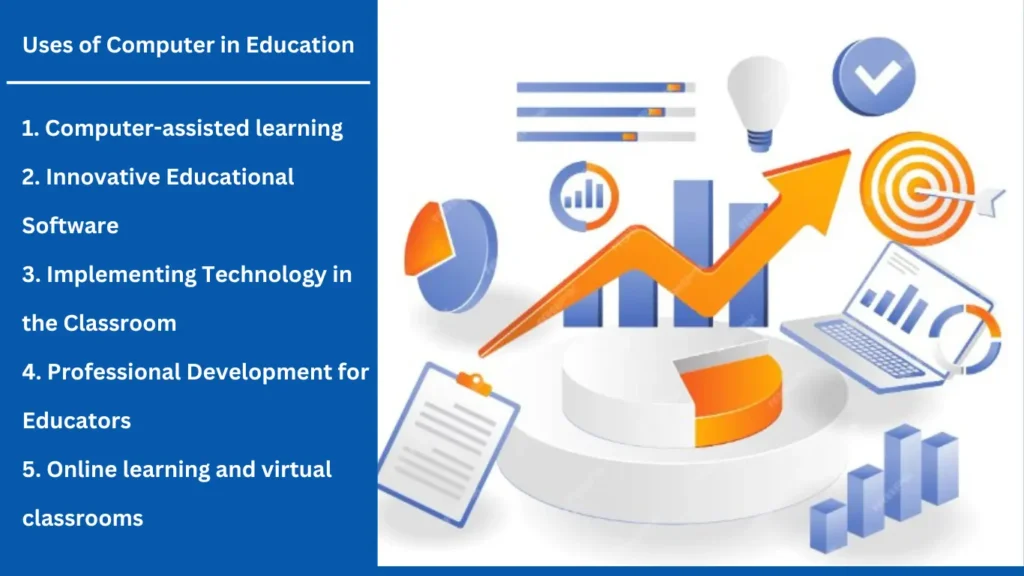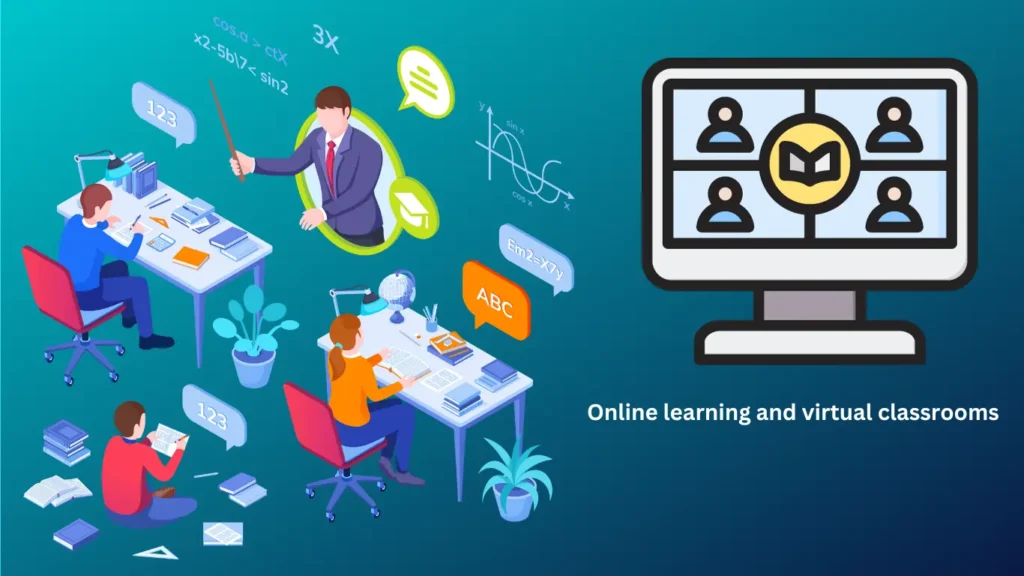Uses of Computer in Education: The diverse uses of computers in education have revolutionized the learning experience, empowering educators to create dynamic and interactive learning environments that cater to the diverse needs of their students.

TOP 5 Uses of Computers in Education | Uses of Computers in Education
1. Computer-assisted learning
By leveraging computer-assisted learning, innovative educational software and applications, technology integration in the classroom, professional development for educators, and online learning and virtual classrooms, educators can maximize students’ learning potential and prepare them for success in the digital age.
Educational software and applications can adapt to individual learning styles and pace, providing targeted support and challenges to students based on their progress. This personalized approach empowers students to take ownership of their learning journey and fosters a deeper understanding of the material.
2. Innovative Educational Software
The landscape of educational software and applications has expanded exponentially, offering a wide array of tools and resources to support diverse learning needs and objectives. From interactive learning platforms to adaptive assessment tools, educators have access to innovative technologies that can enrich the learning experience and empower students to reach their full potential
The use of educational software and applications fosters a culture of continuous learning and skill development among students. Through gamified learning platforms, students can engage in interactive challenges, quizzes, and activities that make learning more enjoyable and motivating.
3. Implementing Technology in the Classroom
The successful integration of technology in the classroom requires thoughtful planning, strategic implementation, and ongoing support for educators. By leveraging the diverse uses of computers in education, educators can create dynamic and interactive learning environments that promote student engagement, collaboration, and skill development.
The integration of technology in the classroom can create new opportunities for student-centered learning, collaboration, and creativity. By leveraging digital tools and resources, educators can empower students to take ownership of their learning, engage in collaborative projects, and express their creativity through multimedia content and digital storytelling. .
4. Professional Development for Educators
As technology continues to play a pivotal role in education, it is essential for educators to receive comprehensive professional development and support in technology integration. By equipping educators with the knowledge, skills, and resources to leverage the diverse uses of computers in education, educational institutions can foster a culture of innovation, collaboration, and continuous improvement.
Furthermore, professional development in technology integration fosters a culture of collaboration and shared learning among educators. By participating in professional learning communities, educators can exchange ideas, strategies, and resources for integrating technology into their instructional practices, fostering a community of practice that supports continuous learning and growth.
5. Online learning and virtual classrooms
The rise of online learning and virtual classrooms has transformed the landscape of education, providing students with flexible and accessible learning opportunities that transcend geographical barriers. By harnessing the power of online learning and virtual classrooms, educators can create inclusive and engaging learning experiences that cater to the diverse needs and learning styles of their students.

Online learning and virtual classrooms offer students access to a wide range of educational resources and opportunities that may not be readily available in traditional classroom settings. Through online platforms, students can engage in collaborative projects, access multimedia content, and participate in virtual discussions and activities that foster critical thinking, communication, and digital literacy skills.
Conclusion: Uses of Computer in Education
In conclusion, As technology continues to evolve, it is essential for educators to embrace the opportunities it presents and harness its power to create impactful and innovative learning experiences that inspire curiosity, creativity, and lifelong learning in their students.